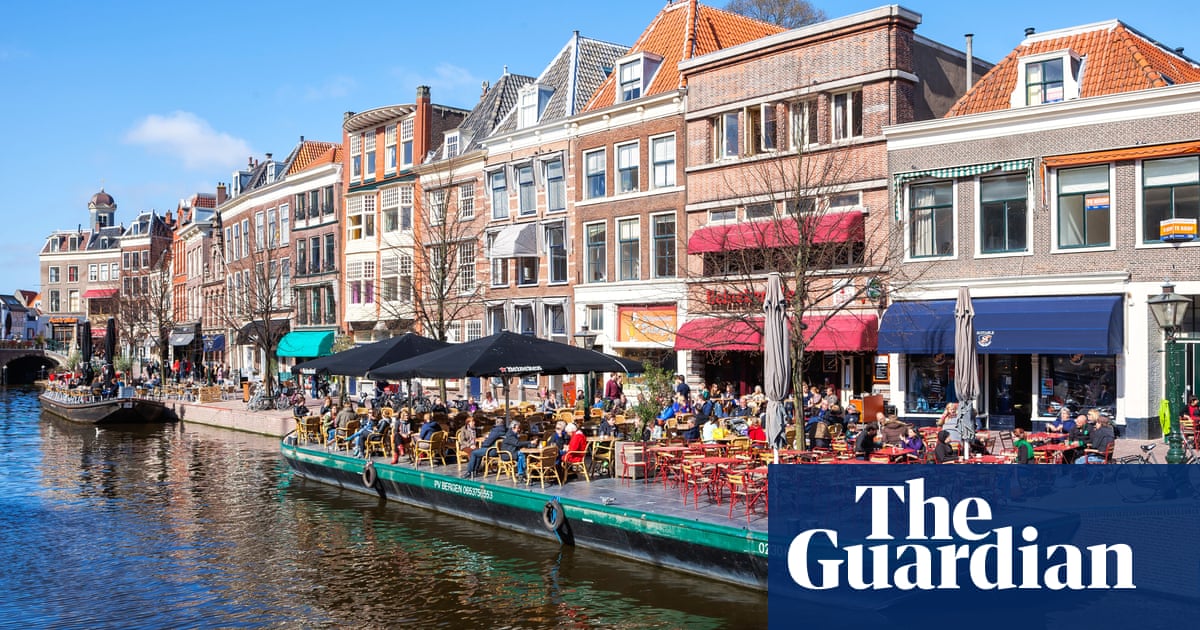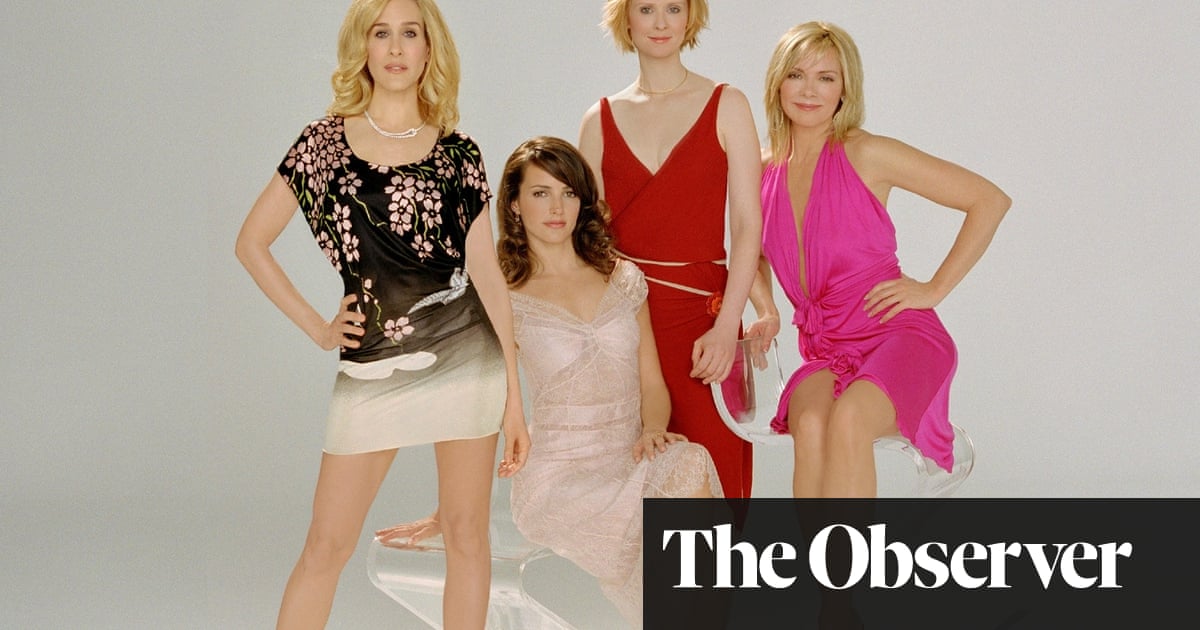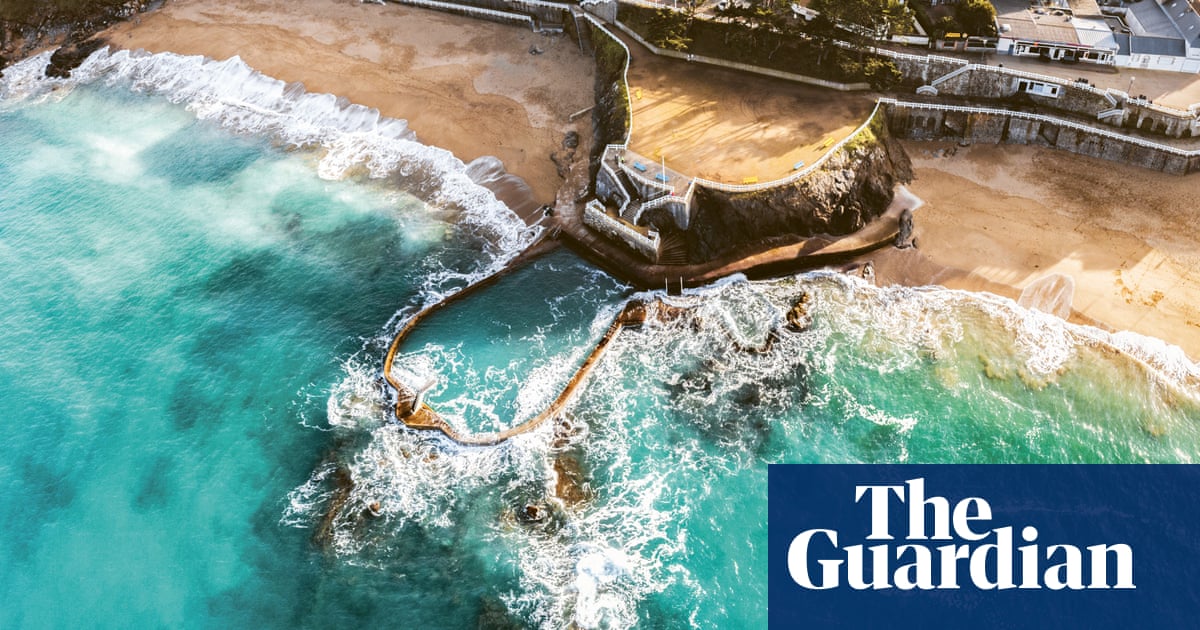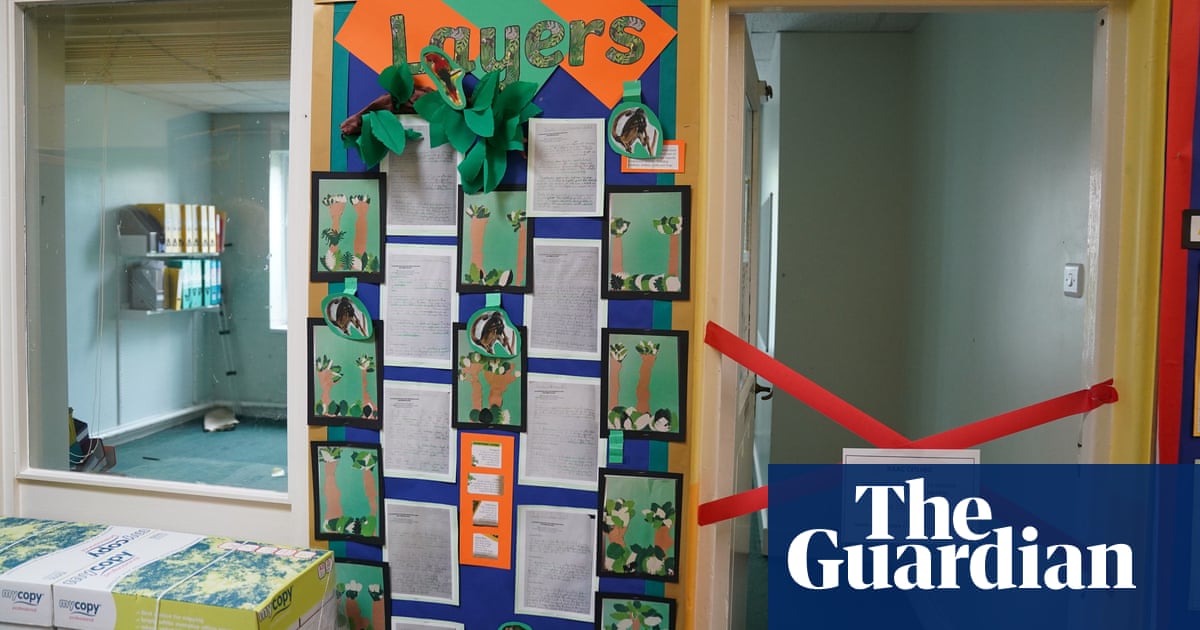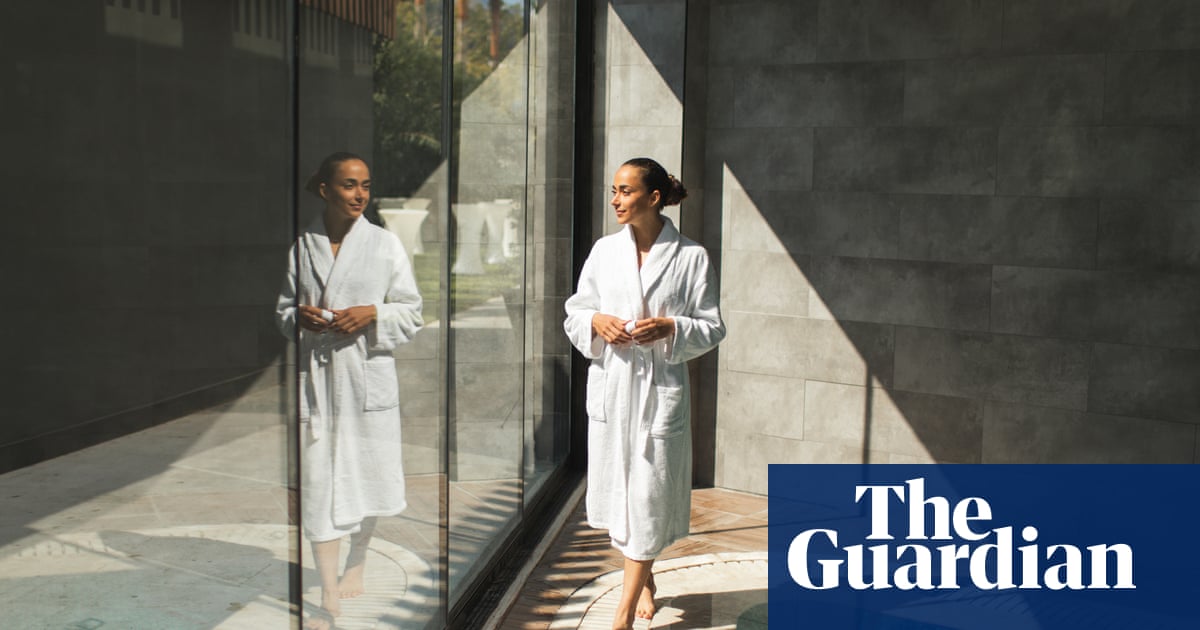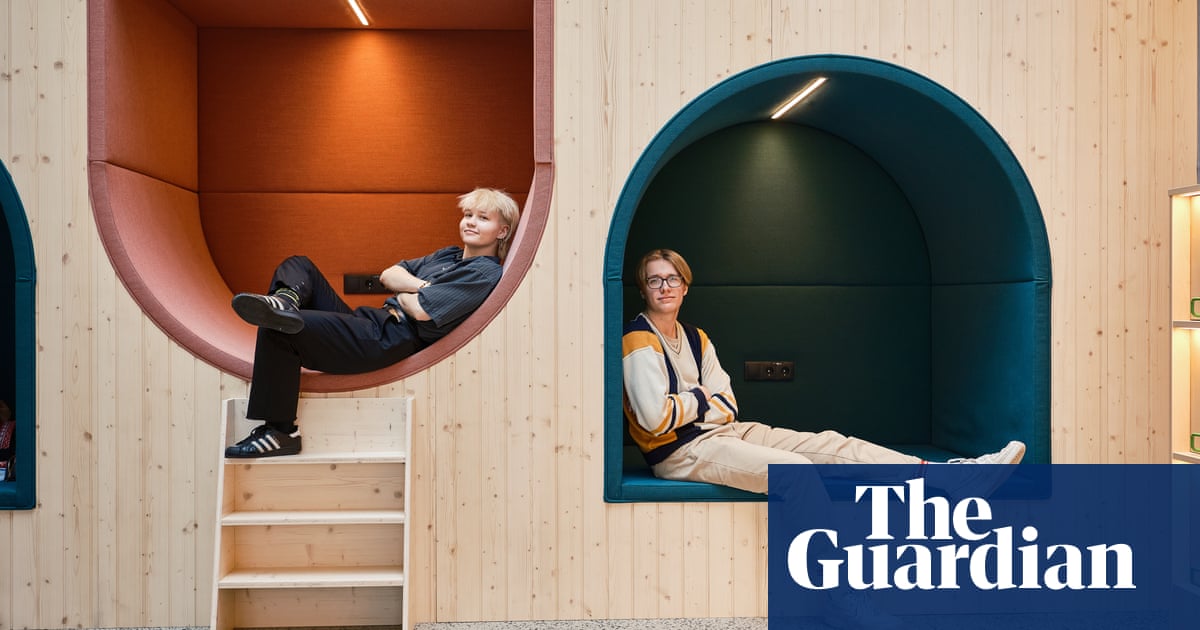
Today’s subject in the sci-fi class at Pelgulinna State Gymnasium is Blade Runner. Thursdays are “voluntary” lesson days, where students at this upper secondary school in Estonia’s capital, Tallinn, can choose from a range of subjects; others taking place today include a rights and democracy course, programming and creative writing in English. The seven 17-year-old students in the sci-fi lesson have just finished watching 30 minutes of the film and are preparing to discuss it when I sneak in at the back, switching to perfect English for my benefit. “We’ve talked about Jungian archetypes, persona and the superego,” says Triin, one of the students. “It has been really helpful for me to understand the different aspects of being human and how to create deeper characters.” They’ve also studied Brave New World and 2001: A Space Odyssey. In the few minutes I am there, the students touch on US history, child labour, empathy and more. “I have so many questions,” says Triin.
Me too. How did Estonia, a small country that is relatively poor compared with most of the EU, become an educational powerhouse? In the Organisation for Economic Co-operation and Development’s Programme for International Student Assessment (Pisa) rankings, which measures 15-year-olds’ abilities in maths, reading and science, the top spots are held by a handful of Asian countries, but Estonia ranks next – the best in Europe. Its teachers are highly educated, the focus is on social and personal skills as much as academic learning and the typical curriculum is packed with a wide range of subjects, from robotics to music and arts. British politicians are taking note. In 2022 Labour’s shadow education secretary, Bridget Phillipson, visited to see what Estonia is doing right.
Gunda Tire, who leads international assessments for Estonia’s education and youth board, says the country’s success is partly thanks to its mix of history and geography. “We have had the Swedes, Danes, Russians, Germans, a lot of people coming and going. Estonians, if they wanted to survive, had to be smart, and they understood that education would take them forward. It was the same when we were under Soviet occupation.”
One of the abiding principles, she says, is equality – universal free school lunches are as much ideological as they are practical. And almost all children attend kindergarten, which is heavily subsidised, so that by the time they start school at the comparatively late age of seven, disadvantages are not as entrenched. Autonomy is also fundamental. “We have given schools the ability to decide for themselves.”
When Estonia embraced the digital age, schools were part of that. As far back as 1997, the country launched an initiative called Tiigrihüpe (Tiger Leap), to upgrade computer resources and provide internet access to schools. “We trained a lot of teachers, connected all the schools and gave them computers,” says Tire. “The idea is not to have an IT class, but to have digital skills incorporated everywhere.” Many children learn coding and robotics, and everything from textbooks to communication with parents is digital. Instead of disruptive students facing harsh discipline, says Tire, Estonian schools tend to have a more nurturing approach – it is common to take children out and teach them in a small group with a separate teacher, and most schools have a psychologist and counsellor.
Creative subjects are just as valued, Tire explains: “They all have to take arts and music, and [what we call] ‘technology’ – in other words, they learn how to cook, knit, things like that. If we allow kids that, their wellbeing and sense of accomplishment increases. We don’t think that that’s irrelevant. Some countries say: ‘We took out the music lesson to teach more maths.’ But look at a sheet of music and you will not think it is less complicated.” Creative subjects, Tire points out, can foster all kinds of skills such as teamwork and problem-solving. She smiles when she remembers watching teenage boys at a large festival last year enthusiastically taking part in folk dances they’d learned at school. “It’s a physical activity, gives you joy, and you are in a group and have to use communication skills.”
To progress into upper secondary, the equivalent of sixth form, students take just three exams – maths, Estonian and a subject of their choice – rather than the pressurised workload when taking many GCSEs in the UK. Could you imagine having to take eight or more exams, I ask Cordelia Violet Paap, a 17-year-old student at Pelgulinna State. She looks shocked and says: “That’s a lot. I’d be a lot more stressed.”
Paap says her school’s ethos of creativity “is a lot more enjoyable than the very orthodox way, where you just sit in a classroom and listen.” To counter any notions that this is too liberal, Targo Tammela, 17, who has just come from a Nordic history class, says there “is still discipline, you still have to pass every test.” Neither has particularly embraced Estonia’s much-admired digital education, but it is still a big part of their learning, they say. Tech is readily available, and most learning resources and tests are online. “There are a few cons, because you can get lazy with it or get lost in the internet,” says Tammela. “But the pros outweigh it.”
It’s early afternoon and at the Gustav Adolf Grammar school in the old part of Tallinn, the school day is already over for many students. I wait at the front gate for the headteacher and watch young children walking off home by themselves, or with friends. “They tend to be very independent,” says Henrik Salum, the (young, jeans-wearing) head.
Behind the historical facade, the school – it educates children aged seven to 15 and this site is for the younger students – has been redeveloped, with plenty of space and light. There are punchbags in one area, which is also used for dance lessons; table tennis in another. The huge central atrium, where children have their lunch, has a piano and a stage for performances. Students sit on the tiered step seating, doing schoolwork or chatting. The atmosphere is friendly and relaxed.
Are there behavioural problems? “Of course,” says Salum. “Every day there is some sort of incident where you have to talk to students about how to respect others and how to behave. We have certain students we need to keep a closer eye on and we work with parents a lot, but overall I think the students tend to appreciate their environment.” It looks pretty harmonious to me. Two children are playing chess in one of the wide corridors and there are neat piles of cushions everywhere to be used for socialising, or for whenever one of the teachers fancies a change of scene and wants to hold their lesson outside the classroom.
In an Estonian class, there is quiet as a group of eight and nine-year-olds work on their own summaries of a book they’ve just read, which is up on the big screen. In another classroom, 12 and 13-year-olds are focusing on English vocabulary. There are just 16 children in this class. Class sizes are usually up to 28 students, but foreign languages are taught in smaller groups, so everyone has the chance to speak and participate.
In Maria Toom’s class of 10 and 11-year-olds, some of the children have stayed back to speak to me – all in excellent English. What do they remember of kindergarten? It was fun, they say. “We had sleep breaks,” says one girl, Laura. Here they get “brain breaks” instead, she says – several times in a lesson, their teacher, known by her first name, will give them a break for a bit of movement, or to play a game.
“One of the key elements of the Estonian educational system is that schools and teachers have a lot of freedom,” says Salum. There are standards they need to meet, but how they achieve that is up to them. Toom has access to tablets and laptops for the children, but she is just as likely to take a lesson outside, or on the roof terrace, with paper and pencil – not to study nature (although they do that, too), but because it’s nice to learn maths outdoors. “I think it gives freedom and it means that students have the flexibility to learn everywhere,” she says.
As we walk around the school, every student says “tere” (hello) to Salum, and one girl comes up to him and throws her arms around his middle. “Some want a high five,” he says. “As long as students are smiling and saying hello then everything is fine. If they stop doing that, I know I’m in trouble.” When Salum was at school, it was more traditional but he says the students appreciate a less hierarchical atmosphere. “We tend to view our students as colleagues so we work together, we involve them.” Many of the school’s teachers are former pupils, which he likes.
The main problem for Salum, and many other heads, is the lack of teachers. Despite the positives of the system, there are still workload and recruitment issues. Why, when teachers are required to have a master’s degree (kindergarten teachers must have a bachelor’s degree), would they earn a comparatively low salary when they could go into a higher-paying job, such as in Estonia’s healthy digital industry? Earlier this year, Estonia’s teachers held their first strike for many years.
Teachers’ pay “is a problem all over the world,” says Kristina Kallas, Estonia’s education minister, when I meet her in her office. “The education system is always under resources pressure.” There are two main issues at the moment, she says. “One is the economic recession, and the other is that any budget surplus goes to defence, because we are in a very precarious situation.” All eyes are on Estonia’s neighbour, Russia, and the situation in Ukraine.
Kallas thinks the strength in Estonia’s education system is because “it’s built from the bottom-up, not run by [central government], and it never was. The education system is older than the state.” Are there politicians who would like to have more control over it? “Surprisingly not,” says Kallas. “Everybody leaves [education] to the experts. Teachers and universities debate it, sometimes publicly and there are arguments about whether it should be done this way or the other way, but it’s not the politicians.”
There are issues that Kallas has her eye on. During the pandemic, Estonian children didn’t fare too badly because they were already well set up for digital learning, but since then, there has been a worrying number of teenage boys dropping out. And although there isn’t an elite private school system, higher-earning families often move to be near the best schools, pushing others out. “This is a trend I don’t like because it works against the reasons why our education system is strong – equity is important,” says Kallas.
Pelgulinna State Gymnasium is clearly one of the better schools. It only opened last autumn – one of 13 new secondary schools built by the state in the last five years, and it’s beautiful, with the focus on space, light and natural materials, especially wood. One room has rows of large screens where students can work in small groups and share presentations, and there are comfortable nooks built into the wall, complete with power points, where students can cocoon themselves. There are also 300 bicycle parking spaces, cool pink bathrooms, trees growing indoors and a comfortable library. A small reminder that all is not entirely perfect in this idyll is this morning’s class in the lecture theatre, where several army officers are offering “defence education”, including preparation, communications and looking after neighbours; these courses were introduced to Estonian upper secondary schools last year.
The teachers use a mix of practises, says Agne Kosk, head of languages, who was leading the sci-fi course. “This generation want to express their opinion, they want to be included in the conversation, to know all sides of the issues. Teaching by regurgitating a textbook doesn’t work any more.” She says a good relationship with her students “is number one. If you don’t click with the students, it doesn’t matter what you do”. Estonia’s education system seems particularly geared up to nurturing that, from the informal and creative approach to the mostly happy teachers.
In her sci-fi class, there is clearly a great relationship – the students have created their own hashtag, written on the whiteboard, which translates as “Agne is cool”. Kosk asks them what notes they made when they watched the first part of Blade Runner, and this sparks a discussion about whether or not they’d fail an empathy test (which would mark them out as one of the film’s non-human replicants), what it means to be human and a bit about film history (is this, one of the students asks, one of the first films to have flying cars in it?). It’s time to watch some more. Lights down – the students fix their attention on the screen.






